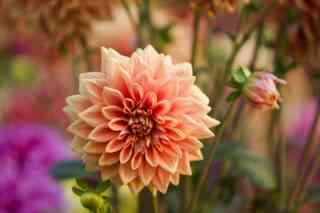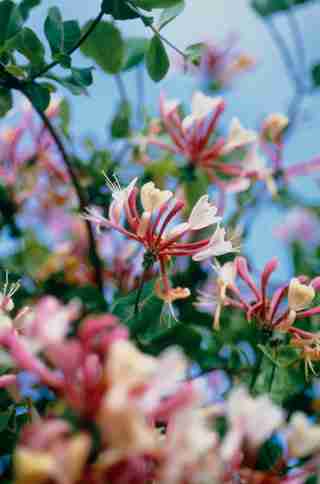The Best Plants For Gardeners Who Lack a Green Thumb
A garden bursting with vibrant flowers and lush greenery—and ideally a few fruits and vegetables—is a pleasure for all the senses. There's the intoxicating fragrance of a blossom, the velvety softness of a new leaf, the lazy buzzing of bees, and the unforgettable flavor of the season's first tomato—not to mention the gorgeous view. But for novice gardeners, this scene is often just a dream—in reality, finicky plants shrivel and die before any joy can be found. Luckily, gardening guru Lauri Kranz of Edible Gardens LA knows of a few plants that are almost foolproof, the perfect place to start for those lacking a green thumb. Read on to find her recommendations for a low-maintenance garden (and look out for her new book, a complete guide to planning, designing, building and planting your own vegetable garden , next year).

Dahlias
"When the last frost has passed and the soil temperature reaches 60 degrees, it is time to plant dahlia bulbs," says Kranz. ""My favorite are the dinner plate varieties, with their large, flowering heads." She suggests choosing a sunny spot with afternoon shade if you live in a hotter region. "Be sure to use plenty of compost and organic soil amendments to properly prepare the site for the bulbs, and water the plants regularly as they grow."

Honeysuckle
Kranz has honeysuckle growing up the fencing in her own backyard. "It provides a lush, green screen with seasonal, fragrant blooms," she says. "I like using honeysuckle on a pergola as well. There are several varieties; find the one that is best for the zone you live in and gives you the most pleasure. I favor the evergreen, Japanese honeysuckle."

Raspberries
"Nothing says summer to me like just-picked berries, still warm from the sun," says Kranz. Like honeysuckle, raspberries love to climb things, so Kranz suggests growing them on fencing, too. "Use an organic, acidic soil when planting them and feel free to put some coffee grounds around them from time to time." No, the plants don't need a caffeine boost; the grounds will actually increase the acid level of the soil. "Help the new plants find their way up by gently placing their branches through the fencing," she says. For extra support, keep the branches close to the structure with some wire.
Blueberries
"Blueberries are a shrub that adds beauty and bounty to the landscape. They can can be planted directly into the garden or grown in large pots," says Kranz. "Blueberries like acidic soil, so be sure to use a good, organic azalea and camellia soil mix when planting. I like to use several varieties of blueberries to prolong the harvest season; check to see which varieties grow best in the garden zone you live in."
Lilacs
"I have a weakness for lilacs," admits Kranz. "Their flower and scent bring so much pleasure. Plus, they are easy to grow and require little care." If you live in a warmer climate, such as Los Angeles, look for a spot in your garden that gets a cool air stream during the fall and winter months; Kranz's lilacs thrive on a sunny hillside. "When planting, dig a hole twice the size of the plant itself and use good, organic amending soil to fill in the hole once the plant is placed."